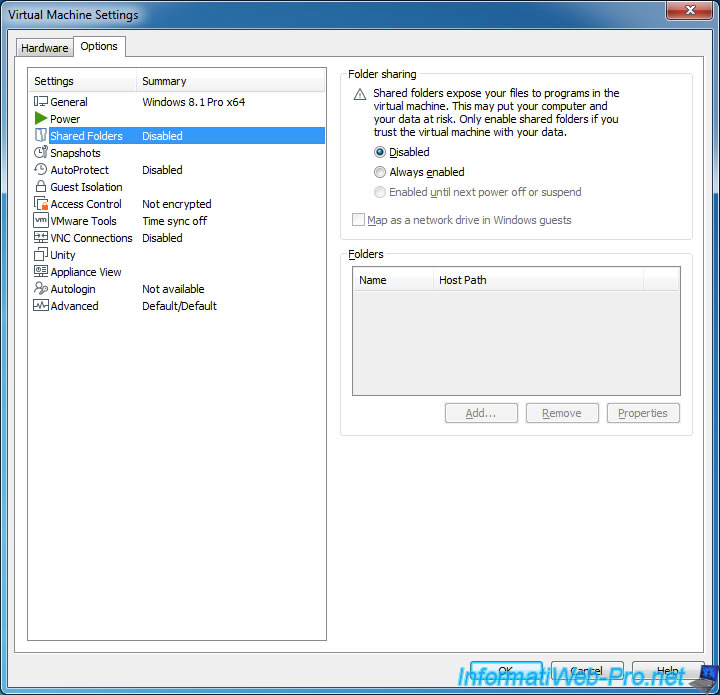- Install Vmware Tools Windows 10
- Vmware Player Install Vmware Tools Disabled
- Manually Download Vmware Tools
If you are a user of new VMware Workstation, then you may find it annoying that VMware installing your Virtual Machine with its default settings, which is called 'Easy Install' and wouldn't let you customize your VM like in RHEL if you are setting your VM for a FTP server, then there is no need of things like News server, Mail server etc. To install VMware tools on macOS Sierra, first, open the VM that you want to install the VMware tools on. Then simply navigate to the top menu of apple. Click on “ Virtual Machine ” then tap on “Install VMware Tools”. Install VMware Tools on macOS Sierra. Click “Install”. Install VMware Tools on VMware Fusion.
It is recommended that you use Open VM Tools in Linux virtual machines.

- However, this option is disabled because the Guest Tools is not installed. To setup Guest Tools in Win 7, click VM / Install VM Tools. When the VM Tools image is automatically mounted on the system, open My Computer and double-click the drive to start the setup.
- In Vmware, if you find the “VM Install Vmware Tools ” menu disabled, you can easily enabled it by: Right click a VM, and click Settings Selecting Floppy in the left column In the right column, Select Use physical drive option Select Auto detect option Restart.
Install Vmware Tools Windows 10
is 10.3.10 and will not be updated. Due to this change, the Install/Update/Reinstall VMware Tools menu is disabled for the following Linux virtual machines:

- Modern Linux distributions not officially supported by tar tools.
- Red Hat Enterprise Linux 8 and later releases.
- CentOS 8 and later releases.
- Oracle Linux 8 and later releases.
- SUSE Linux Enterprise 15 and later releases.
- Linux kernel version is 4.0 or later, and the version of the installed Open VM Tools is 10.0.0 or later.
- Linux kernel version is 3.10 or later, and the version of the installed Open VM Tools is 10.3.0 or later.
For the Linux virtual machines that have Open VM Tools installed but are not in the scope mentioned in the preceding bullet, Install/Update/Reinstall VMware Tools menu is enabled, so that you can install bundled tar tools on top of Open VM Tools to get Shared Folder (HGFS) feature support.

Vmware Player Install Vmware Tools Disabled
For old Linux virtual machines not supported by Open VM Tools, perform the following steps to install tar tools.
- Power on the virtual machine.
- Verify that the guest operating system is running.
- Because the VMware Tools installer is written in Perl, verify that Perl is installed in the guest operating system.
- On the host, from the Workstation Player menu bar, select Player > Manage > Install VMware Tools. If an earlier version of VMware Tools is installed, the menu item is Update VMware Tools.
- In the virtual machine, open a terminal window.
- Run the mount command with no arguments to determine whether your Linux distribution automatically mounted the VMware Tools virtual CD-ROM image. If the CD-ROM device is mounted, the CD-ROM device and its mount point are listed in a manner similar to the following output:
- If the VMware Tools virtual CD-ROM image is not mounted, mount the CD-ROM drive.
- If a mount point directory does not already exist, create it. Some Linux distributions use different mount point names. For example, on some distributions the mount point is /media/VMware Tools rather than /mnt/cdrom. Modify the command to reflect the conventions that your distribution uses.
- Mount the CD-ROM drive.
Some Linux distributions use different device names or organize the /dev directory differently. If your CD-ROM drive is not /dev/cdrom or if the mount point for a CD-ROM is not /mnt/cdrom, modify the command to reflect the conventions that your distribution uses.
- If a mount point directory does not already exist, create it.
- Change to a working directory, for example, /tmp.
- (Optional) Delete any previous vmware-tools-distrib directory before you install VMware Tools. The location of this directory depends on where you placed it during the previous installation. Often this directory is placed in /tmp/vmware-tools-distrib.
- List the contents of the mount point directory and note the file name of the VMware Tools tar installer.
- Uncompress the installer.
The value x.x.x is the product version number, and yyyy is the build number of the product release.
- If necessary, unmount the CD-ROM image.
If your Linux distribution automatically mounted the CD-ROM, you do not need to unmount the image.
- Run the installer and configure VMware Tools as a root user
Usually, the vmware-config-tools.pl configuration file runs after the installer file finishes running. If you attempt to install a tar installation over an RPM installation, or the reverse, the installer detects the previous installation and must convert the installer database format before continuing.
Note: For newer Linux distributions, users are prompted to choose the integrated open-vm-tools. - Follow the prompts to accept the default values, if appropriate for your configuration.
- Follow the instructions at the end of the script.
Depending on the features you use, these instructions can include restarting the X session, restarting networking, logging in again, and starting the VMware User process. You can alternatively reboot the guest operating system to accomplish all these tasks.
Manually Download Vmware Tools
If a new virtual hardware version is available for the virtual machine, upgrade the virtual hardware.
